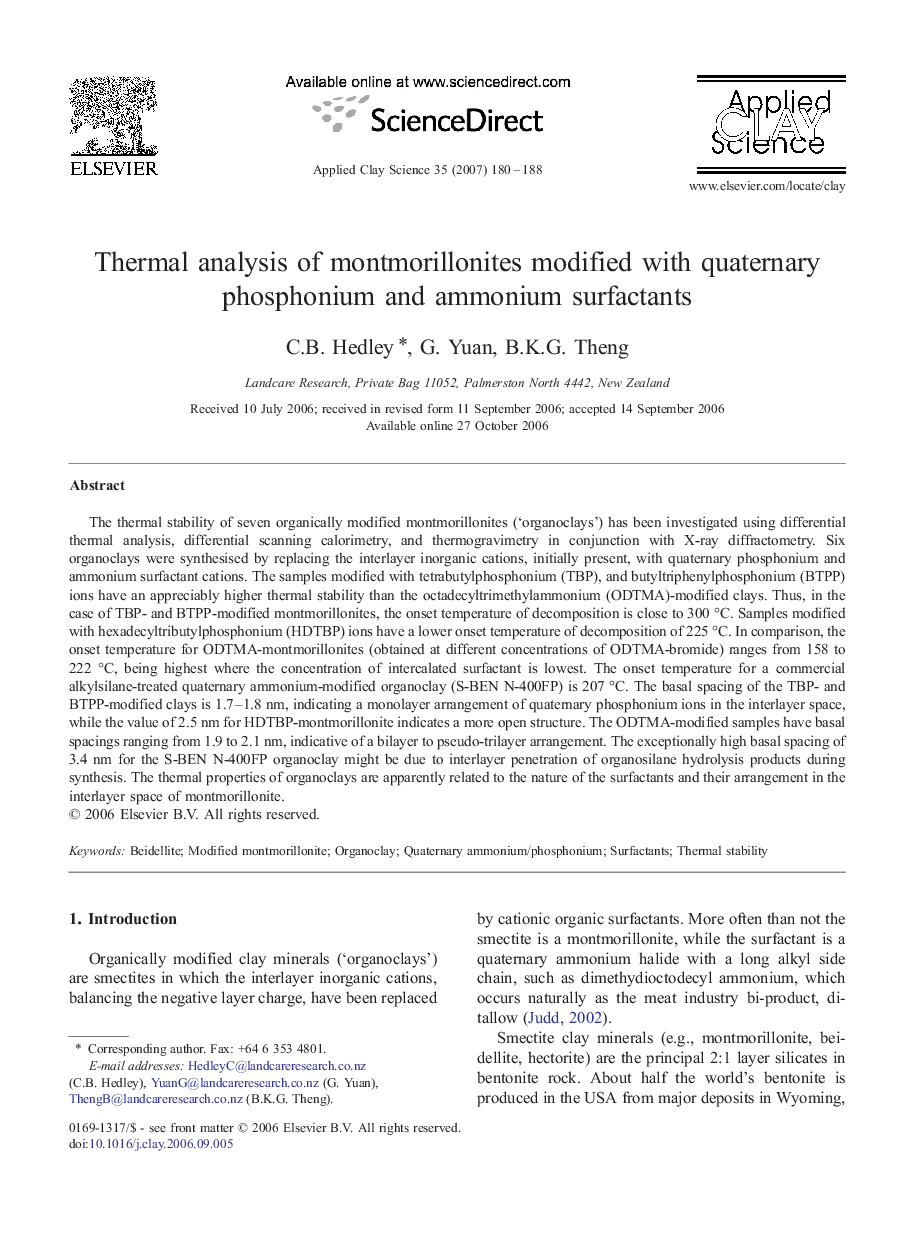| کد مقاله | کد نشریه | سال انتشار | مقاله انگلیسی | نسخه تمام متن |
|---|---|---|---|---|
| 1696604 | 1519136 | 2007 | 9 صفحه PDF | دانلود رایگان |

The thermal stability of seven organically modified montmorillonites (‘organoclays’) has been investigated using differential thermal analysis, differential scanning calorimetry, and thermogravimetry in conjunction with X-ray diffractometry. Six organoclays were synthesised by replacing the interlayer inorganic cations, initially present, with quaternary phosphonium and ammonium surfactant cations. The samples modified with tetrabutylphosphonium (TBP), and butyltriphenylphosphonium (BTPP) ions have an appreciably higher thermal stability than the octadecyltrimethylammonium (ODTMA)-modified clays. Thus, in the case of TBP- and BTPP-modified montmorillonites, the onset temperature of decomposition is close to 300 °C. Samples modified with hexadecyltributylphosphonium (HDTBP) ions have a lower onset temperature of decomposition of 225 °C. In comparison, the onset temperature for ODTMA-montmorillonites (obtained at different concentrations of ODTMA-bromide) ranges from 158 to 222 °C, being highest where the concentration of intercalated surfactant is lowest. The onset temperature for a commercial alkylsilane-treated quaternary ammonium-modified organoclay (S-BEN N-400FP) is 207 °C. The basal spacing of the TBP- and BTPP-modified clays is 1.7–1.8 nm, indicating a monolayer arrangement of quaternary phosphonium ions in the interlayer space, while the value of 2.5 nm for HDTBP-montmorillonite indicates a more open structure. The ODTMA-modified samples have basal spacings ranging from 1.9 to 2.1 nm, indicative of a bilayer to pseudo-trilayer arrangement. The exceptionally high basal spacing of 3.4 nm for the S-BEN N-400FP organoclay might be due to interlayer penetration of organosilane hydrolysis products during synthesis. The thermal properties of organoclays are apparently related to the nature of the surfactants and their arrangement in the interlayer space of montmorillonite.
Journal: Applied Clay Science - Volume 35, Issues 3–4, February 2007, Pages 180–188